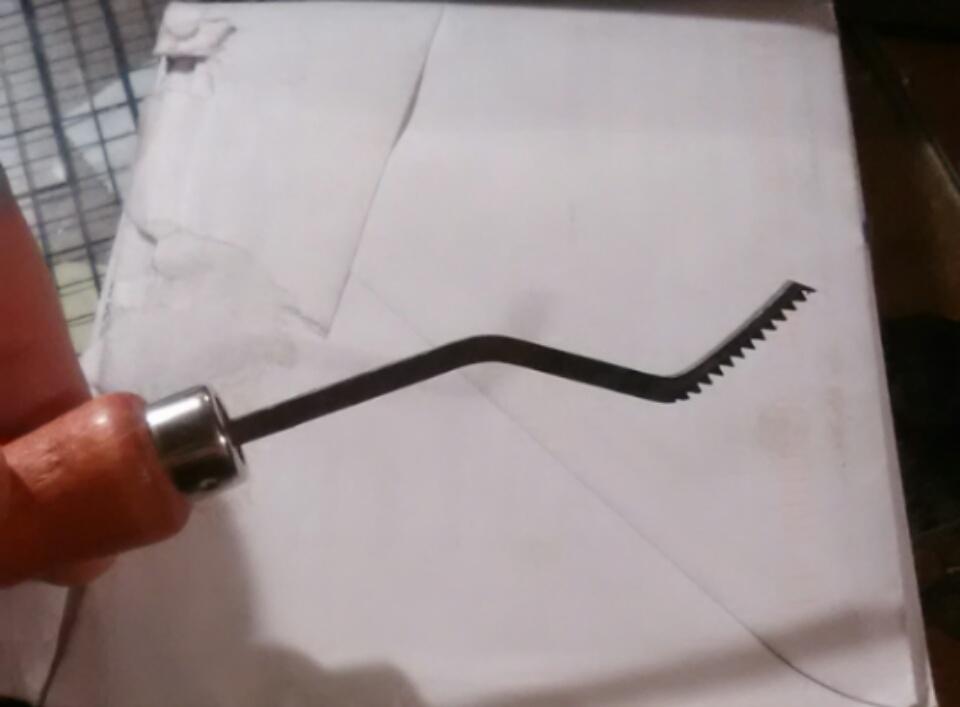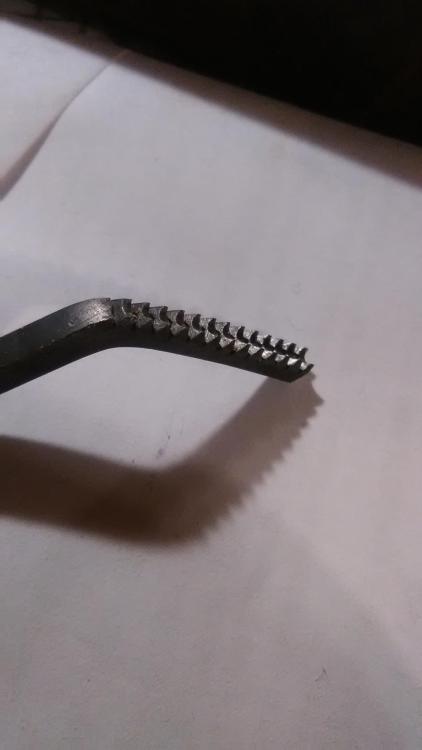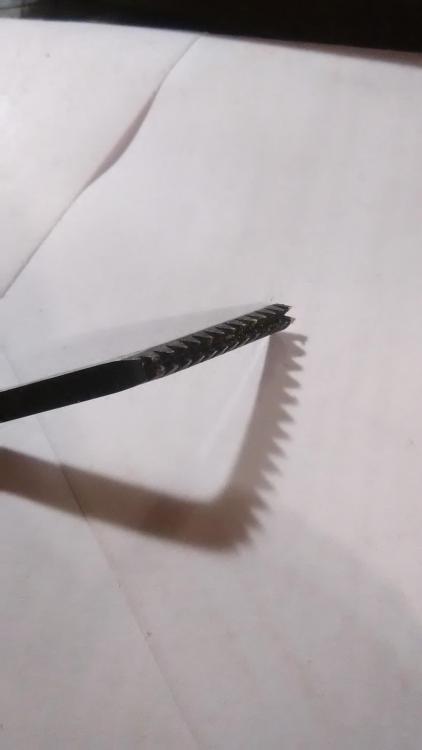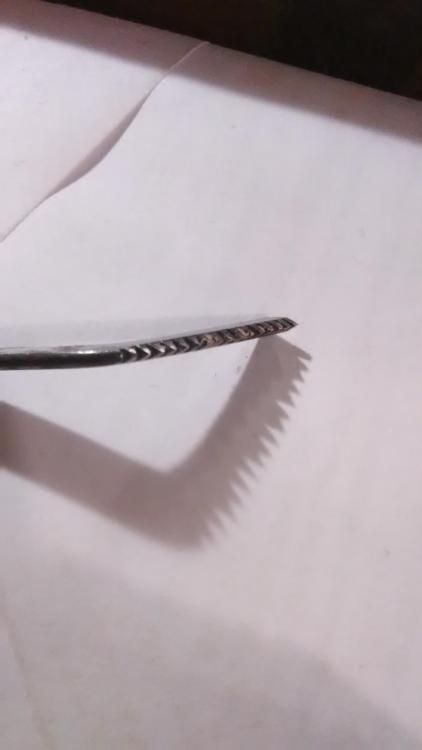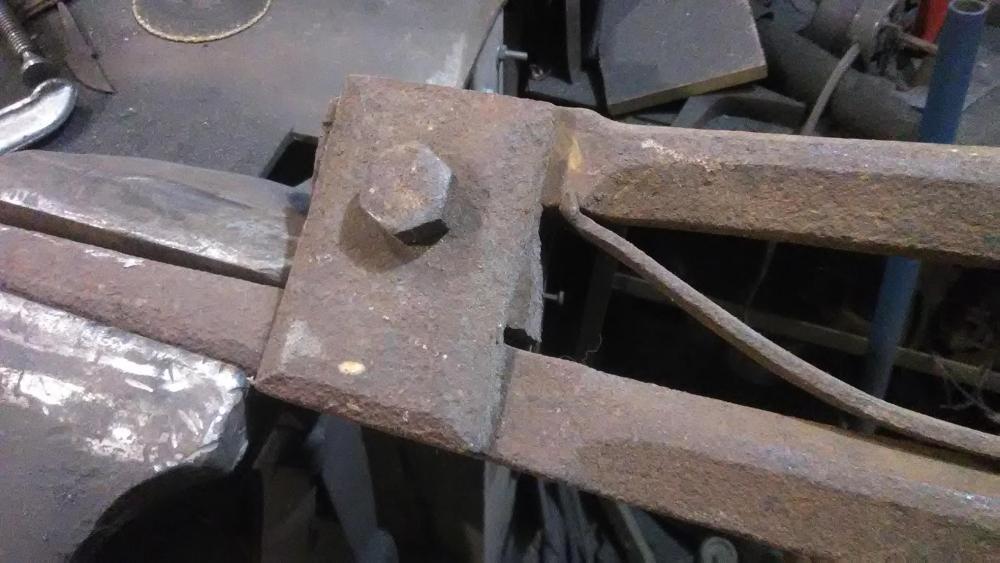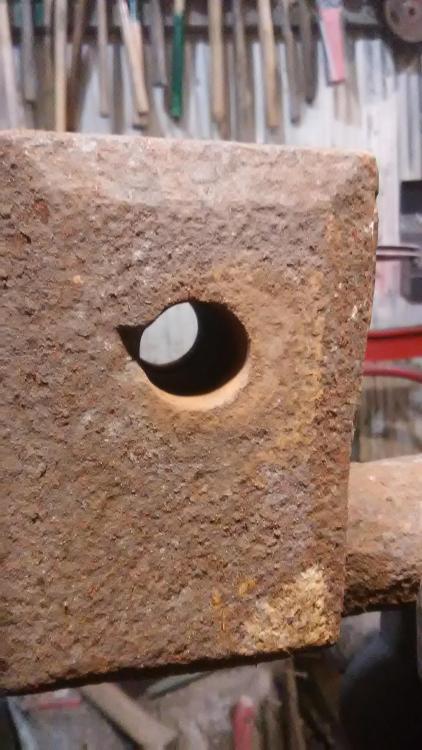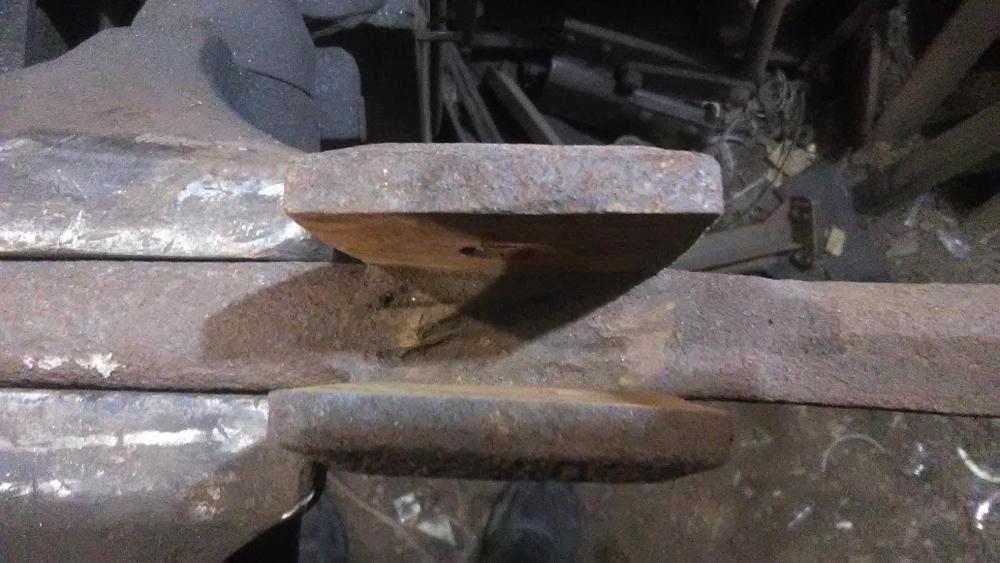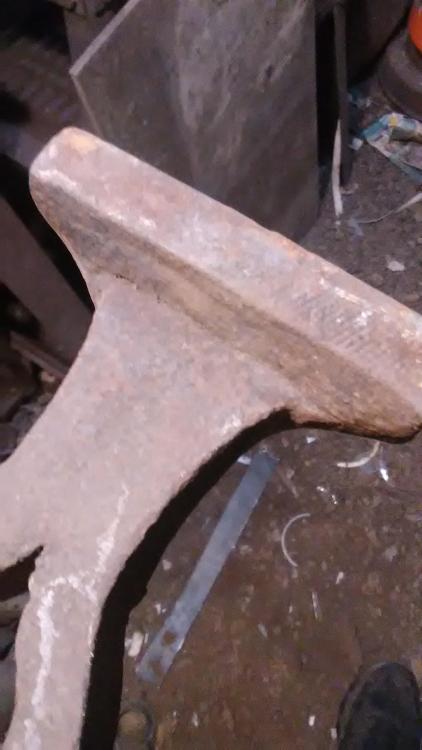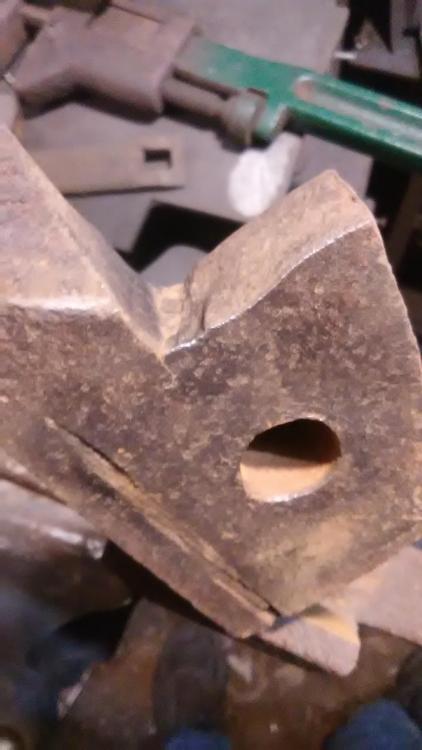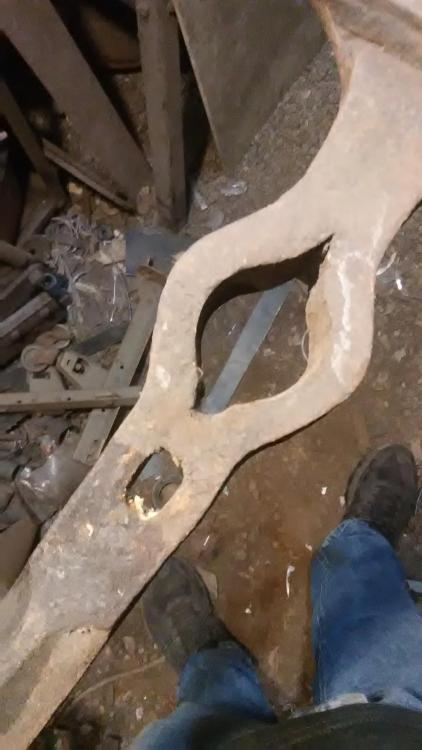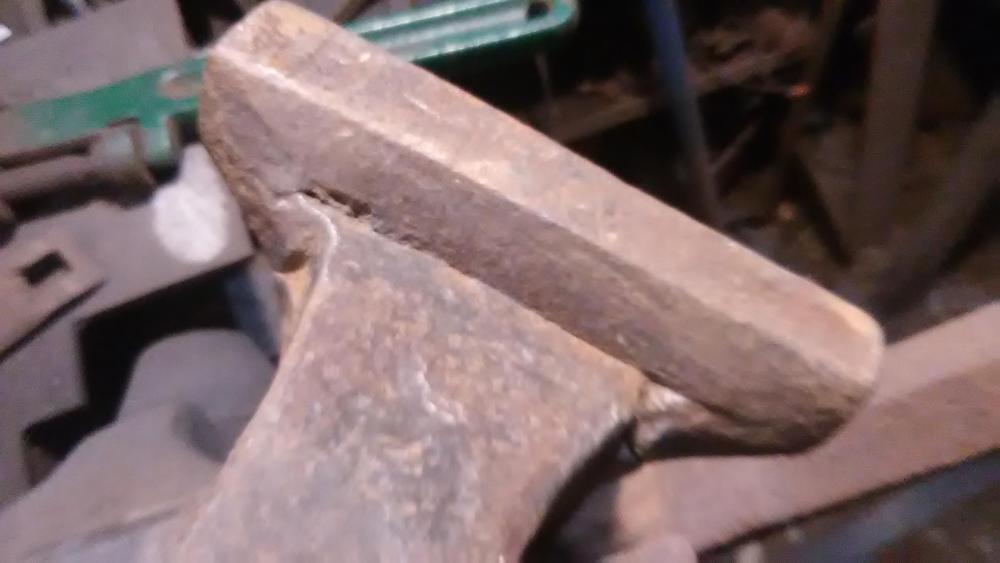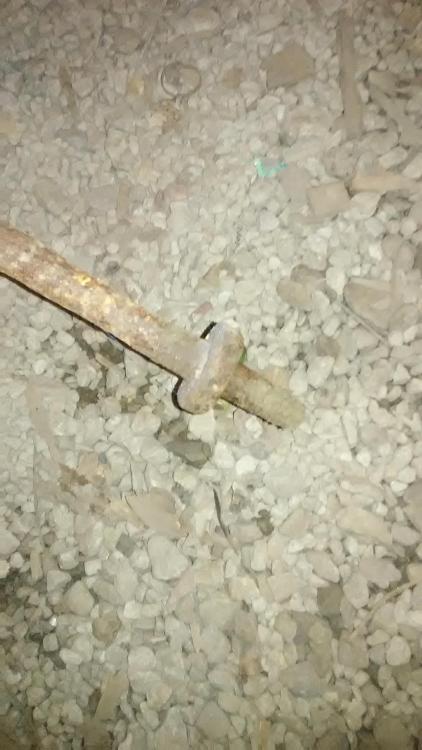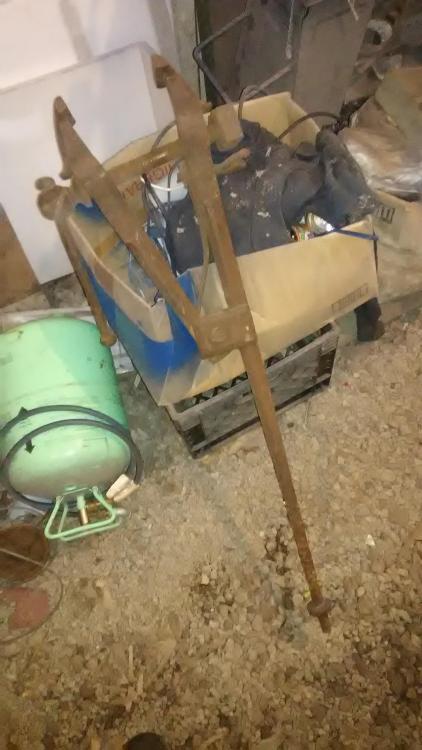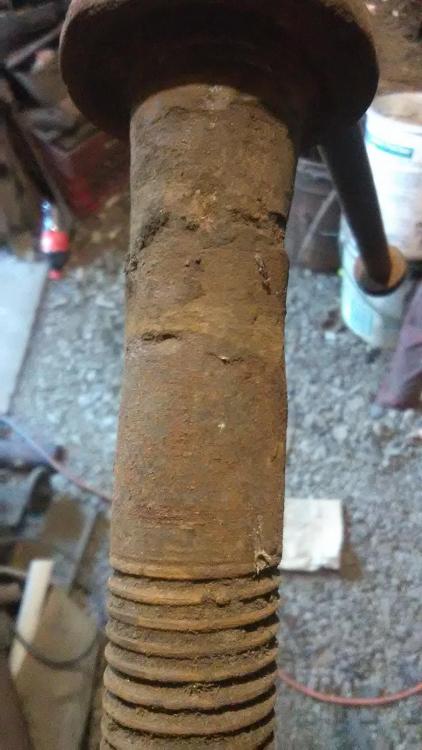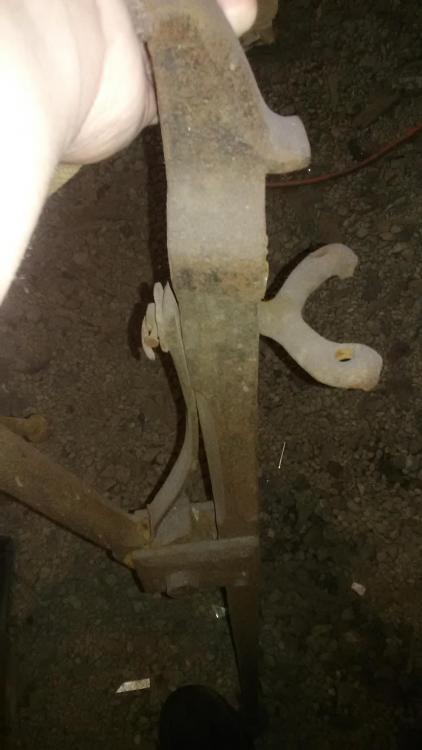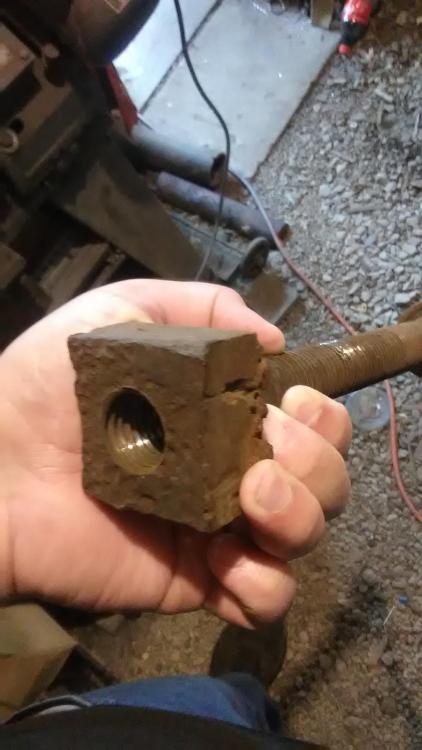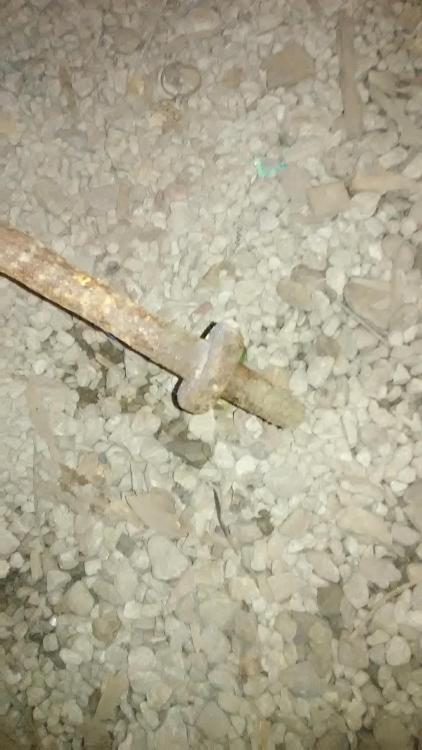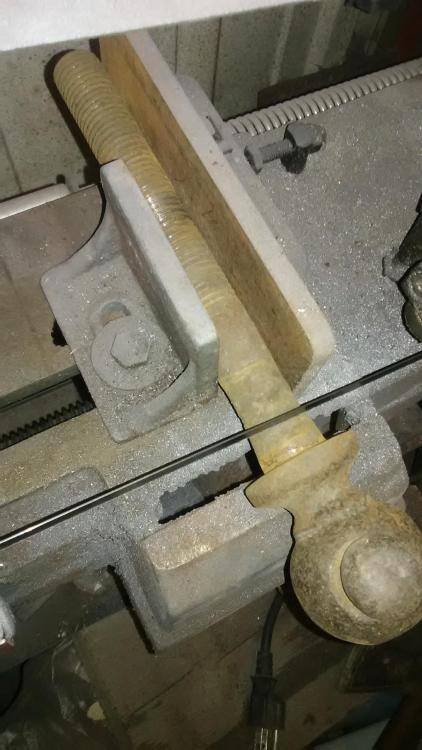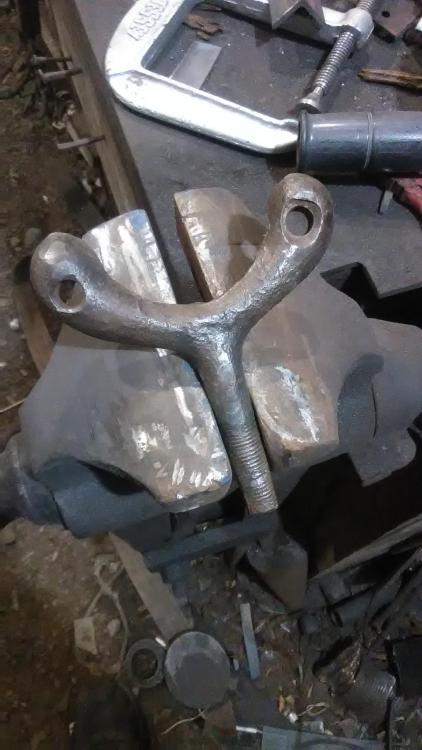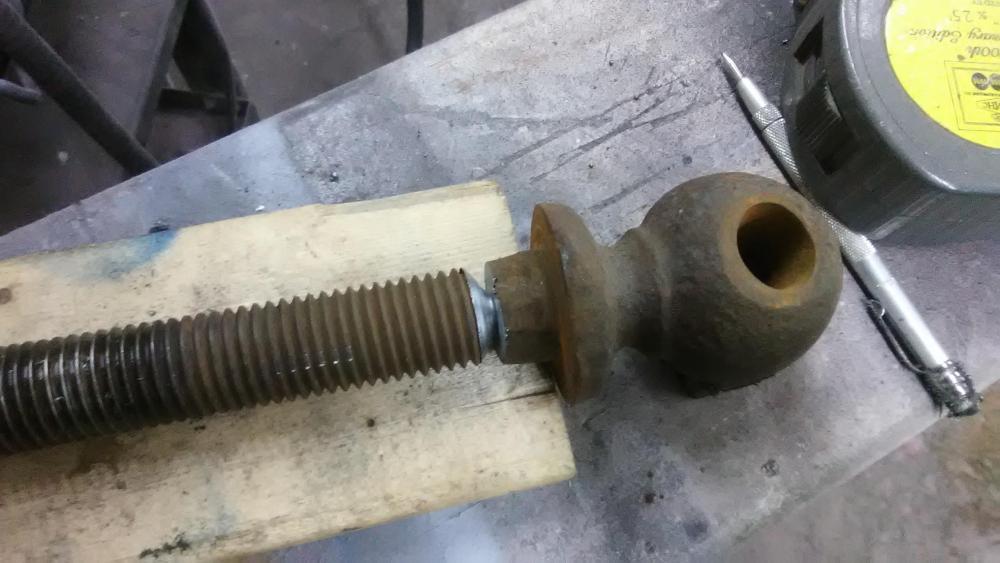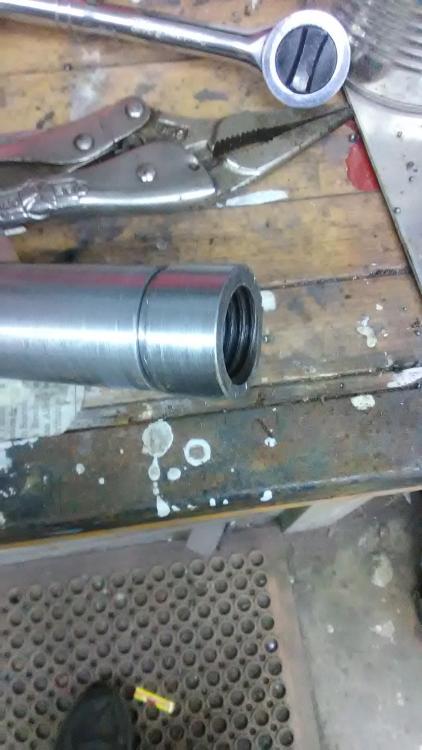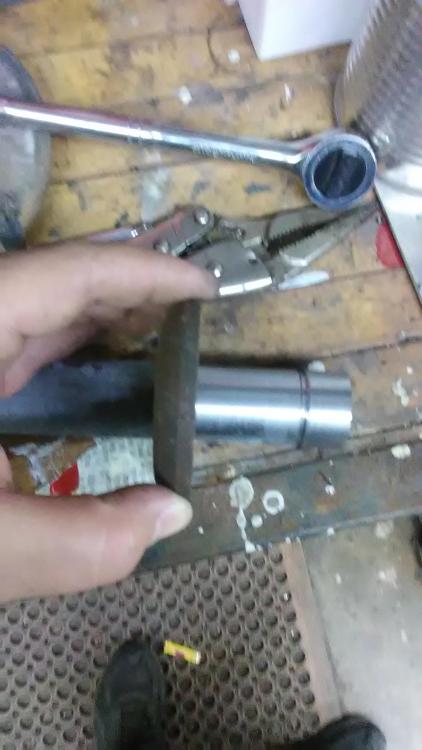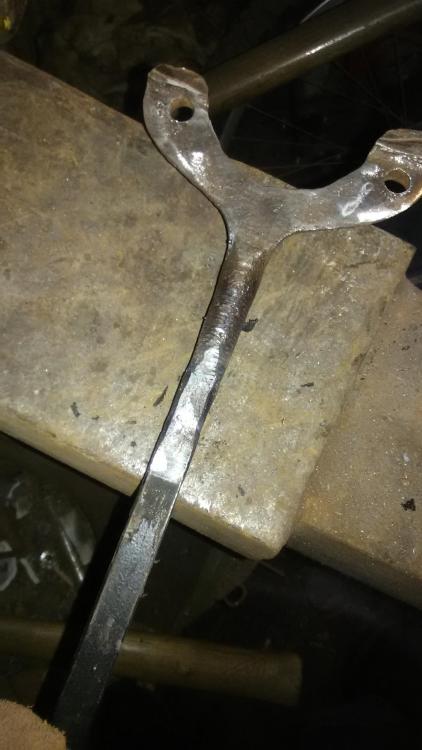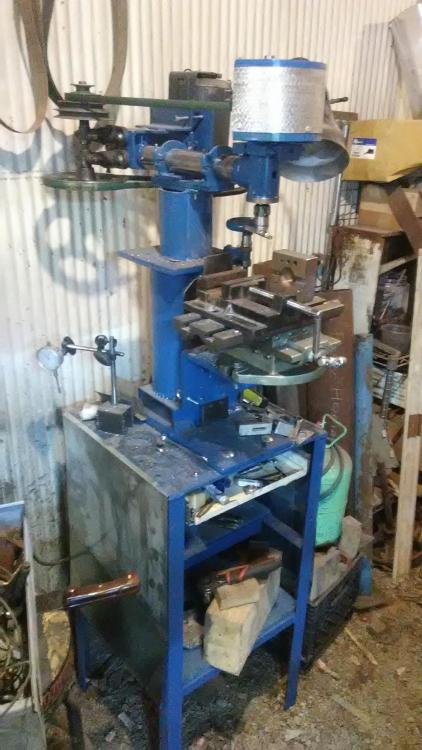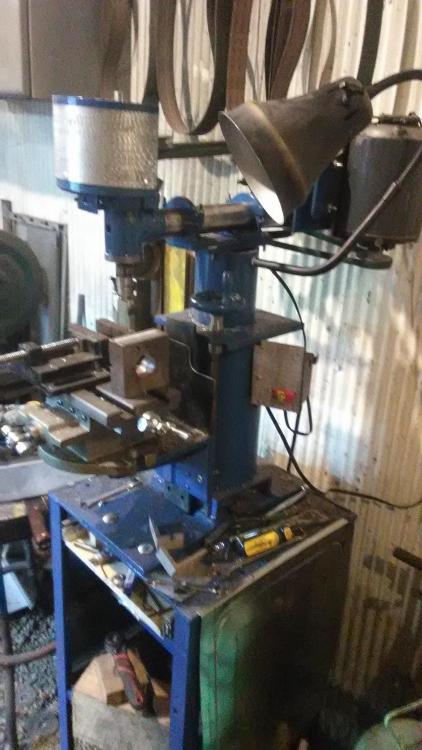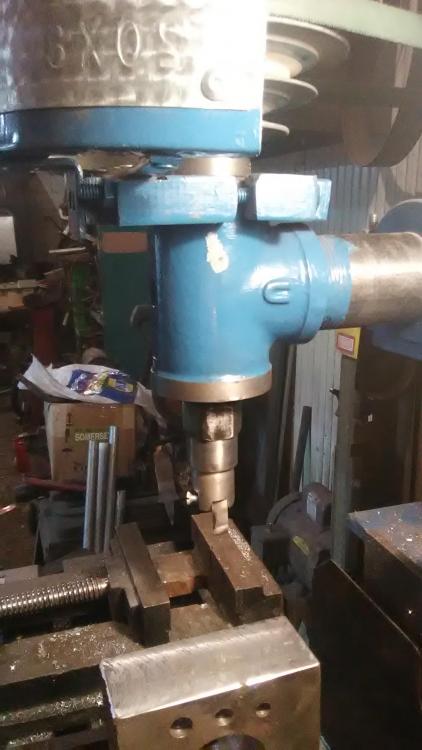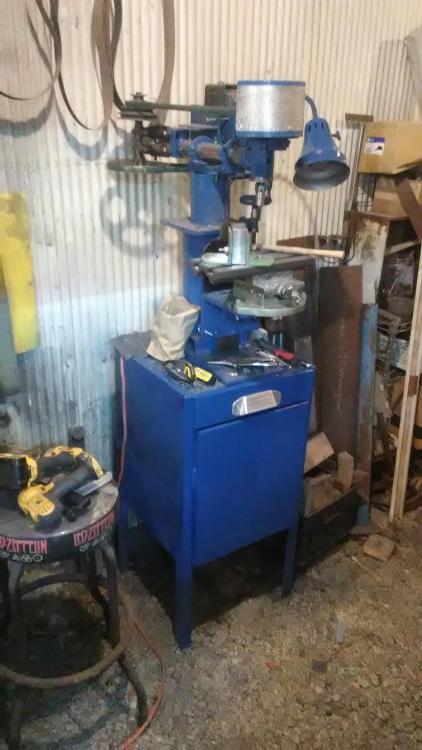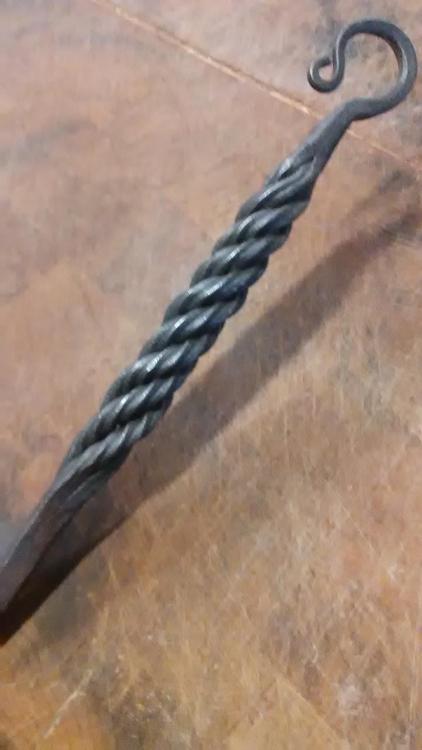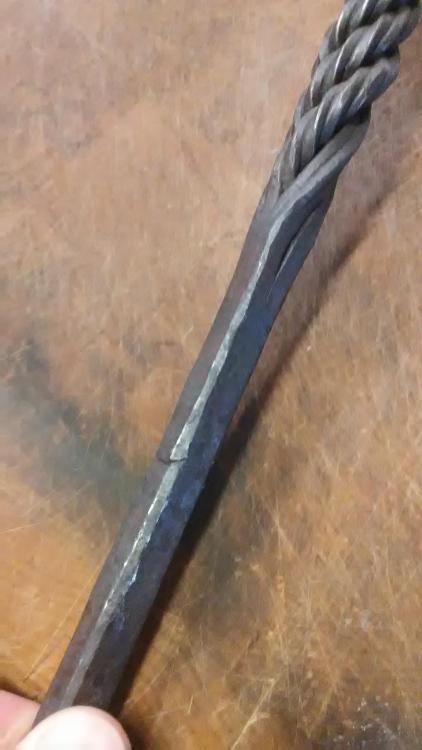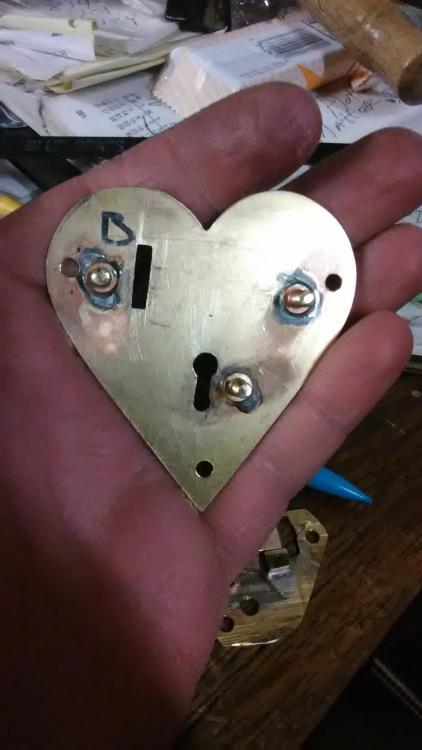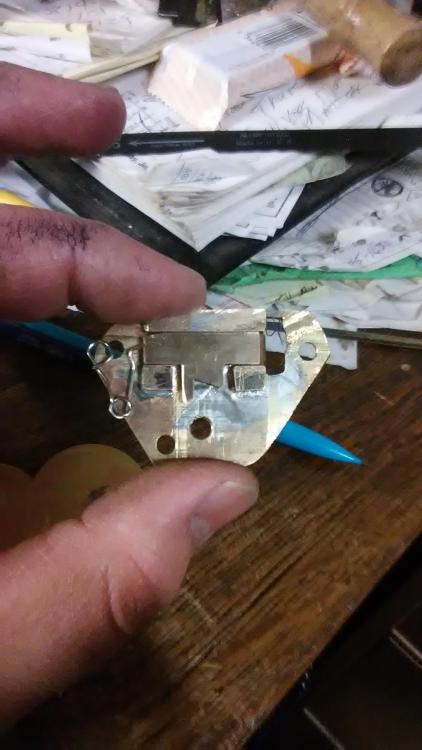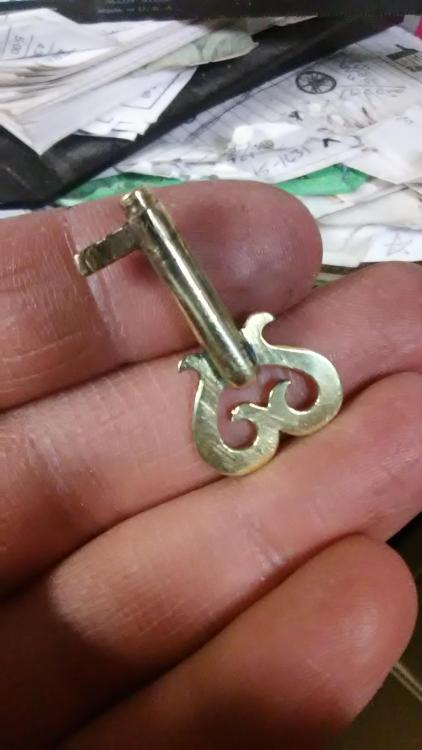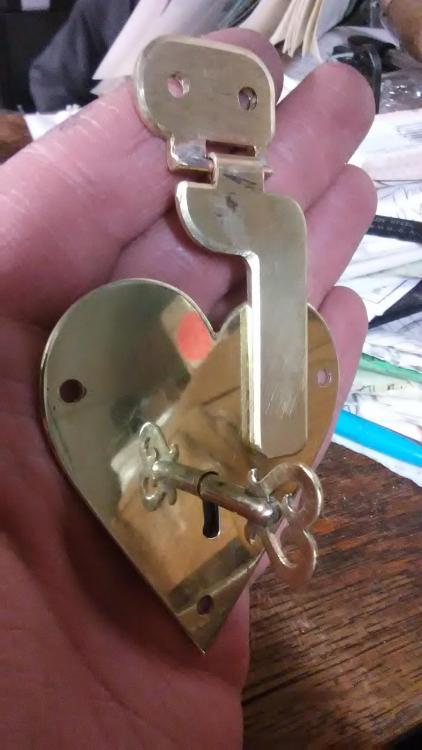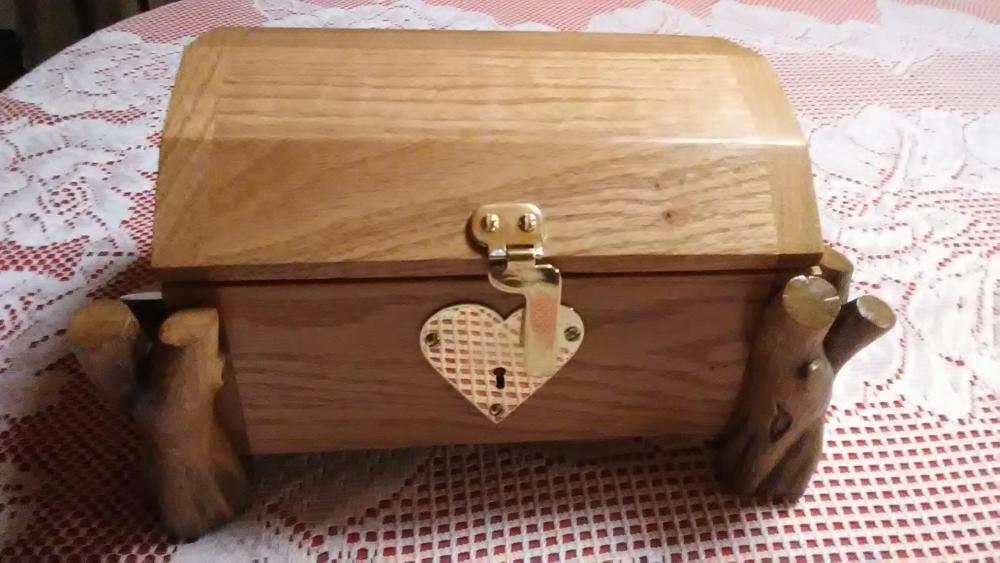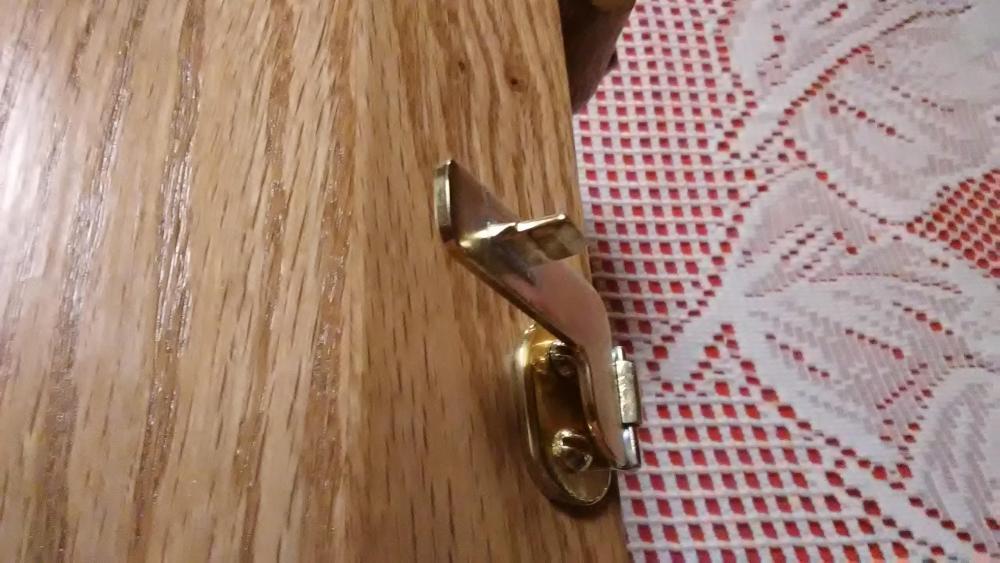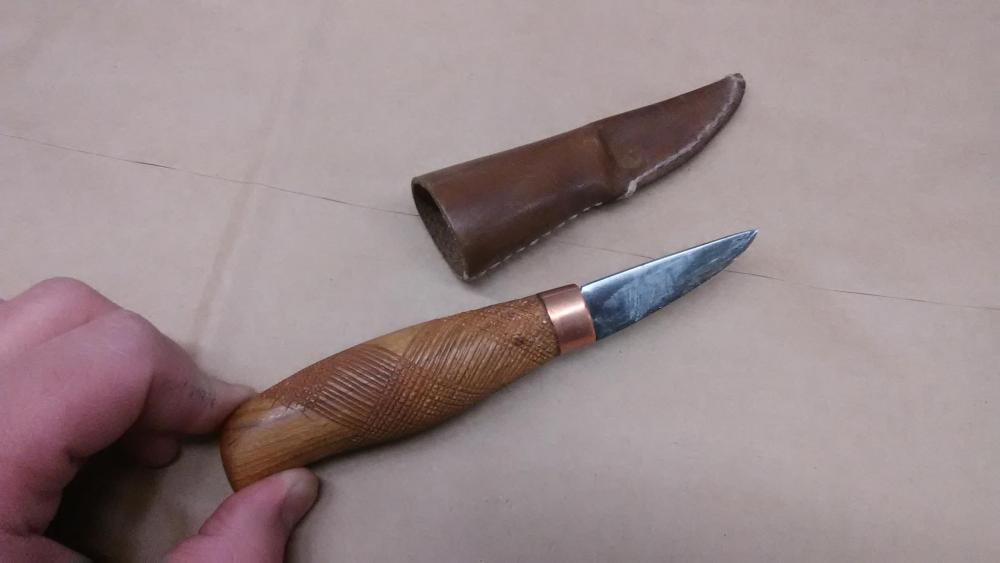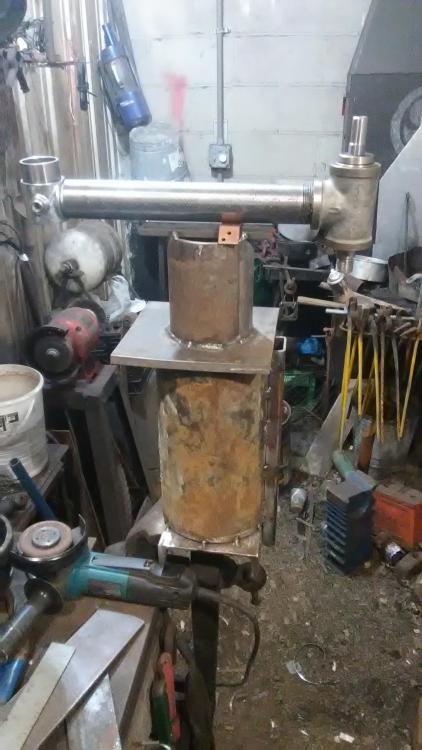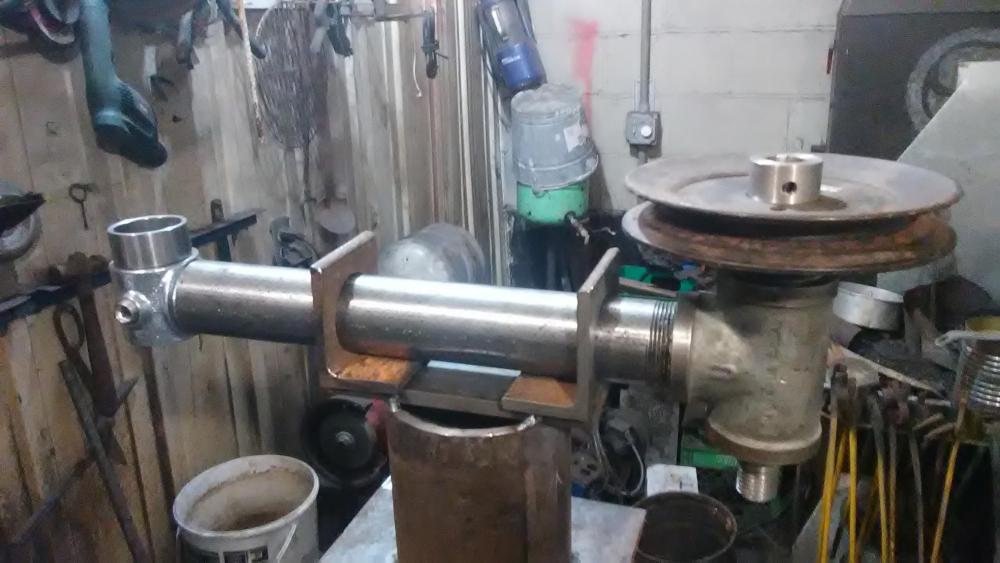-
Posts
344 -
Joined
-
Last visited
Content Type
Profiles
Forums
Articles
Gallery
Downloads
Events
Everything posted by Ed Steinkirchner
-
It's super late but for the sake of people reading this later who are wondering: these are the checkering tools i used, but this knife was the first thing i had ever done with them so it didnt turn out fantastic but it makes for a really nice grip which really helps avoid self inflicted injury! FYI its not smart to checker around something with an odd shape like this because the lines distort as they wrap around. the better way to go is to make the classic diamond shapes. I mean they exist that way for a reason as i learned! there are three cutters in my set, theyre used like a saw almost, rubbing them back and forth to cut the lines. you use the single wide one to cut the starting line then use one of the double ones to follow, one side riding in the previous groove and the parallel one cutting a new one, then you move to the next line and repeat. The tools in my small set are:The single line cutter, the narrow v cutter, and a slightly wider u shaped cutter. You should be able to imagine how they work by a glance at the pics. i think any semi competent Smith could make one of these tools once theyve used them
-

homemade milling machine build
Ed Steinkirchner replied to Ed Steinkirchner's topic in MIlls, Milling machines, etc
its as rigid as a 3/4" spindle can reasonably be expected to be honestly. the bearings have about .0005 or so runout but thats peanuts for what i do. rigidity is very good in the head assembly but the table isn't made as well as i would like and I've spent a good deal of time removing backlash and defects. What I'm going to do is use this table (in addition to hand scraping) to bootstrap my way up to a better made system. At that point the x/y table will be sent to the drill press where its more suited to purpose. Honestly the whole thing was done as a practice project to help me hone my machining and machine building skills in a way that would yield something useful in the process. If i just wanted or needed a mill, buying one would really be a simpler way to go! -
the more i look at this vise, the older it gets! i notice now that the front jaw is forge welded on and the hinge area of it has been doubled back and welded to add mass, plus the bevel forging of the shank between hinge and eye is not even, its about 10degrees off of being right, though it is square in cross section. also there appear to be fullering marks on the front hinge jaw pivot but im not sure their reason. As well the post side definitely has the "cheeks" of the hinge forge welded on and it has some deep fullering marks inbetween on the plates, i presume to mame sure the cheeks made good contact with the post. The hinge hole in one side of the cheeks has a small "key" i it which ive seen once or twice on other vises before to keep the bolt in position and prevent rotation , though the bolt is certainly not original. im intrested to see what electrolysis reveals when the rust is gone.
-
im curious now about how the bracket was attached. was it wedged on the spring side and have you shown pics of it in a post that i can search for by chance? Sounds interesting!
-
I'll show it in a seprate post when i get to that step probably but as a basic description, its a blue plastic barrel with the top cut off and a crude cage of scrap bars welded together around the outside as the one electrode (the workpiece is the other), and filled with water and a bit of calcium carbonate to make it conductive. then i use an old 12 volt battery charger as the power source.
-
no, the pivot is square bolt but its not as old as the rest, and yes the leg hole has definitely been punched and drifted to a taper approximately .5 inches square and wider on the "back". As for the thread, thats exactly how i intend to make the female thread later when i go over this properly (after finding/making the male thread first of course) as well as a more accurate thread box. right now its more of a "get by". after getting things in a workable state i am going to throw it in my electrolysis barrel for derusting to see more of the details as well. Something else that makes me wonder about its age other than the mounting system is the way the ring is pretty obviously welded around the foot.
-
found this at a yard sale for about 10 bucks, and it has set in the corner for a few years now so i figured itd be as good of a time as any to give it a once over. the screw is the most obvious problem. someone has "repaired " it in the past by lopping it off and welding on a 1" bolt in its place and discarding the thread box in lieu of a torche cut square nut. I currently dont have an adequate replacement piece of acme thread and dont really feel like making a square thread on the lathe right now, so i decided to keep the bolt because its a small light duty vise. Another thing showing its light purpose is the way the mounting bracket is attached. it appears that it was a tapered square with threads at the very end but i dont know if that is original as it all seems very light. But regardless i will replace the cludged in bent nail with an extension and a slot for a wedge but will likely replace the whole shebang with a more substantial bracket later. i also will leave provisions for replacing the screw and box later. Now onto the progress pics!
-

homemade milling machine build
Ed Steinkirchner replied to Ed Steinkirchner's topic in MIlls, Milling machines, etc
finally got this finished, added a cheap x/y table till i can make a better version, belt guard, paint, z axis, and built a cabinet with the surface plate in the top pull out drawer, plus everything else as far as basic accessories go. I know this isnt really a machining heavy forum but someone may find interest in seeing how a blacksmith builds a milling machine! final product with pretty much finished cabinet -
Yes that's exactly correct, and by "the middle 6" " i mean to twist all but one inch of each end of the starting rods, leaving the ends straight for welding together
-
Might as well toss this in here. Its 4 bars of 1/4" square about 8" long, incised on all four sides, twisted in the middle 6", then forge welded for the last inch on each end, then twisted AGAIN (opposite direction as the individual bars) then scarfed and welded to the rest of the piece (in this case a fire shovel) Hope that makes sense!
-
My dad made my sister an oak jewelry box last Christmas and needed a latch/lock for it, so i made this one from brass plate and bar stock.
-
1085 for the blade, which is about 1 1/2" long or so, handle is cherry wood about 4" long and is my first forray into checkering. Which turned out great but i learned a whole lot of things to NOT do, so the next one will be better. It's all finished with a copper ferrule and a simple leather sheath. Its hands down my favorite carving knife to date.
-
The title says it all, had this project in the works for a while now and it's finally gotten to the point that it looks like something so i figured now it's the time to post some pics and details. It's built pretty much entirely from scrap, save for fasteners. The column is 8" well casing, capped with an 8" square of 1/2" plate, then the head is blocked 6" higher for the head mount on 4" pipe. The head itself is a 1 1/4" pipe with a heavily machined T on the end for the spindle. The spindle is mounted in tapered roller bearings, threaded at the nose 1" x 10 tpi for fittings like boring heads and fly cutters. More details to follow. The drive is going to be 4 step step pulley primary reduction, then a 2" to 6" final reduction to the spindle, which should make the bottom end speed with the 1725 rpm motor, about 200 rpm. The angle iron brackets that hold the head are bored to fit the horizontal pipe. They'll be split and fasteners added to clamp the head (it'll look like main bearing caps). Then the angle of the head can be turned left or right and clamped if needed. When the drive and the head is complete I'll add guards over the spindle pulley then it's on to the slide ways!
-

help tuning helve hammers
Ed Steinkirchner posted a topic in Power Hammers, Treadle Hammers, Olivers
on an earlier post i had shown my home built small helve hammer, ( ) I was going to ask if anyone had experience with tuning leaf spring helve hammers and if perhaps there were any links to information on the subject. ive been having a world of trouble replying to said post but i figured this was a good subject to start a new post about anyway. Ive searched here and elsewhere and came across something about tuning light sheetmetal forming helves but it was pretty sparce on details. The hammer is striking fairly well with the treadle half depressed but it seems to miss a beat when all the way down, and i feel like a hammer with a 15+ pound head should be striking much harder than it is.I can do as much work with a 3# hand hammer at the moment... Any help is greatly appreciated and sorry in advance if im not able to respond to this post, the site doesnt seem to want to let me post replies for some reason -

Small Homemade Helve Hammer
Ed Steinkirchner replied to Ed_Steinkirchner's topic in Power Hammers, Treadle Hammers, Olivers
Also it appears that i accidentally posted that in the account i made when i thought i lost my account name ages ago... back when i didnt know how to work a computer. i guess this computer saved the login info and i never told it otherwise! so long story short, this is my post, sorry about that -

forged and whitesmithed spatula
Ed Steinkirchner replied to Ed Steinkirchner's topic in Member Projects
Yes that'd be a good place for this type of transition, it leaves just a tiny bit of extra metal to a place that really needs it. the only issue (if you can call it an issue that is) is that its one-sided, that is it leaves a front and a back side, or a presentation face and a back face. that's one of the reasons i left the back as forged. one thing i learned about whitesmithing on this project is that you need to leave it a tad thicker than you think you need too to allow for filing, like a knife. And an added benefit of having a "good" and "bad" side is that when there was a bit of a deep mark in the good face, it could be flipped and hammered colf from the back in that spot to bring it up and make the whole surface a bit more even -

oil fueled lighting appliances?
Ed Steinkirchner replied to Ed Steinkirchner's topic in Blacksmithing, General Discussion
Well it looks like I've got quite a few books to find and add to my collection! I've actually looked through the book on the sorber collection, actually that's where i saw many of the examples i mentioned before. mtmetal, that's pretty fantastic work! and very faithful to the originals to boot. I've wondered what the flame height/etc. was supposed to look like in practice. I never even gave a thought that The "candle socket" on the rushlight might actually be a snuffer, though it does make quite a bit of sense, it'd be a bad idea in a finished home to go blowing melted grease and ash around when its time to put out the light afterall. One of the intriguing things about grease/oil lamps is that their fuel isn't by itself flammable (unlike the aforementioned cornchips!) And without a wick its pretty safe, albeit messy, in the case of it being dropped or tipped over. F. Turley: I've actually seen one of those forms in a swage block before, something said it was for making ladles, but it was actually a lamp form. The point was far deeper and longer than would be practical for a ladle mould. Had i known about those type of lamps years ago, id have carved such a depression into my swageblock form before i had it cast! Itd simplify both crussie making and making lead ladles as well! Thanks everyone for the amazing wealth of information on the subject, I've learned more from this post than i have from untold amounts of time searching the web. -

oil fueled lighting appliances?
Ed Steinkirchner replied to Ed Steinkirchner's topic in Blacksmithing, General Discussion
wow! thank you for that information, for some reason i always thought there was more too it than that! Might have to try my hand at making a couple to make those rush holders in the corner seem like they're actually going to be put to use! Rushlights are pretty interesting, hardly anyone knows about them as classical lighting implements these days. everyone thinks all they had were candles but really rushlights and oil lamps were surely quite a bit more common. I've actually noticed that most rushlights have a provision on the moving arm for holding a candle. Though many I've seen have also had just a welded ball as weight. -

oil fueled lighting appliances?
Ed Steinkirchner replied to Ed Steinkirchner's topic in Blacksmithing, General Discussion
Hwoolridge i actually have that book (only book i ever spent.over a hundred bucks on actually!) And i use it as a go-to for hinges, latches, and the like but there's hardly any household items beyond door/structure hardware. Thomas, that's the kind of thing I'm looking for! Thanks for the suggestion, i need to hit the library or just order it if i can Charles ill definitely keep that in mind, the internet can be a difficult place to navigate and i definitely need all the advice i can get to make it a bit easier! Thanks for the link John there's some awesome stuff there Frosty, yeah the basic lamp is extremely old and so far as I've seen there's dozens of different forms in every culture. i remember seeing ones made of pottery at some point which were smaller than i expected but short of that I've never seen one in person. betty lamps as i understand are an improved design over the previous form. the simple oil lamp was like a lead ladle with a small point that held the wick and a basin for the fuel whereas the betty lamp had a small strip of metal under the wick that heated the oil a bit more effectively as well as a hinged cover to keep the oil from splashing around so much. Actually i believe "betty"is a corruption of the german word "besse" meaning better. That's about the extent of my knowledge on the subject though at the moment. And I'm glad i could stimulate some ideas! -

oil fueled lighting appliances?
Ed Steinkirchner posted a topic in Blacksmithing, General Discussion
Ive seen a few pictures of some pre-electricity/kerosene lighting appliances in books and occasionally online but never have seen anywhere where they specify how theyre made or show them in use. the things I'm talking about specifically are betty lamps, and the similar simple oil lamps that preceded them, as well as things such as "gallows lamps" which have a small iron "pot" suspended on a pivoting stand to keep them level and a tube up the center to hold the wick. Another thing that i haven't been able to find much about is the rushes for rushlights, when i make them for demonstrations it'd be nice to have a way to show people how they were used. any information would be greatly appreciated and if there are any books on the subject or of iron housewares in general id love to know -

forged and whitesmithed spatula
Ed Steinkirchner replied to Ed Steinkirchner's topic in Member Projects
Actually The transition was formed by angling the metal over the rounded edge of the anvil an setting it down kind of like a shoulder Its actually pretty good practice for learning some good hammer control and anvil edge usage. (That being said. though I've done maybe ten of this kind of transition and this is the first one that came out so perfectly! ) I imagine you could do the same thing with a set hammer though probably -
Excuse the less than fantastic picture quality, my camera isn't working at the moment so i took the pics from my phone I had made a fully forged spatula a while back from scraps and that made me want to take it a step further and go all out on another! That's how this one came about The handle started out as a piece of 1/4 x 3/4 mild steel and the blade was a scrap of old lawnmower blade i think, forged out thin on the power hammer. Its about 19" overall and the whole front face is filed bright and the necking has a bit of filework for an accent. There's also some accent lines across the handle but i don't know if the pictures make it visible or not. was really a pleasure to do something bright and shiny for a change!
-

suffolk style latch
Ed Steinkirchner replied to Ed Steinkirchner's topic in Blacksmithing, General Discussion
oh! I forgot to mention that, the bolt was later replaced, as you said, by threading one ear and tapping threads on just the end of the new pivot pin as for the center round, that was just a bit of careful work with a fine file, it was fairly simple really because it was at the top of a convex surface and here's a pic of the side profile that i forgot to add initially -
this latch was forged as a replacement for the outside of my parents general store, because the delivery truck guy broke the old cast iron one off with his hand cart! it was forged from a 7'' cutoff of 3/8'' x 1 1/4'' mild steel, the cusps were forged then the handle bent before the whole was filed smooth and the center accent cleaned up and punched with the roman numerals for the year.(i didn't have 1/4 inch number stamps only letters) the thumb piece was forged from a 2.5'' piece of 3/8' square scrap (found it on the shop floor! ) the "ears" that the thumb piece pivots on, have two 1/8'' tenons on each that fit into holes drilled close to the slot and riveted into deep countersinks this is somewhat of an odd latch in that the inside is a basic brass knob and deadbolt but the outside requires a stub about 1.5'' long to project into it and press a latch member which moves the bolt. i wish i had a pic of the back so you could see it but i kind of had to rush and finish it so the door could be used.
-
its been a while since ive posted anything so i figured id post a few things to catch up! so here we have a set of calipers forged from 1/2 x 3/16'' mild steel, with forged rams head wingnut and 1/4'' forged bolt the hand vice is made from 1/2'' mild steel, upset and flattened to form the hinges and upset and forged to a T shape in the vice for the jaws. holes for the 5/16'' carriage bolt were punched and a wingnut was forged out of a scrap of 1/2'' round bar. finally a spring was cut from pallet strapping and riveted in place before the joint rivet was set. it measures about 8'' tall with 1'' wide jaws and really does a fine job of holding fine work for filing, buffing, etc.

